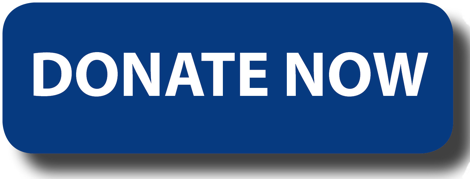
There is Mud EVERYWHERE!
I have been working as object registrar and collections manager at Tell Atchana, Alalakh Excavations in Turkey since 2014. During excavation seasons my work usually consists of recording objects and samples on our database, organising our storage facility and making sure all objects are where they are supposed to be. When specialists come to visit, for example bioarchaeologists, zooarchaeologists, palaeobotanists, or our bead or lithics specialists, I help them find their objects or samples and advise them on recording methods according to our system. I also teach our international group of students object handling and recording skills. For the last ten years I have therefore spent most of my time during season at our research centre where we store our finds and where our offices are, and not in the field. This year I decided to venture out into the great unknown and spend one day a week in the field. Reader, let me tell you: It was muddy!
The Tell Atchana excavations investigate the Bronze Age/Iron Age city of Alalakh, located in the Amuq Valley, Hatay (Turkey), along the major branch of the Orontes River, near present-day Antakya. Covering an area of 22 hectares, it is the largest Middle and Late Bronze Age (2100–1100 BC) settlement in the region and was the capital of the regional kingdom of Mukish in the 2nd millennium BC. Located at a crossroad and in the buffer zone between Anatolian, Near Eastern and Eastern Mediterranean cultures, traces of early cultural connections and signs of Bronze Age globalization were revealed at the settlement during the 1930s and 1940s excavations under the leadership of Charles Leonard Woolley. The renewed excavations, begun in 2003 under the direction of K. Aslıhan Yener (then Oriental Institute, University of Chicago, later Koç University, Istanbul) as part of the Amuq Valley Regional Projects and continued by Murat Akar (Mustafa Kemal University, Hatay) since 2020, have focused on new exposures and archaeological research questions as well as integrating and reinterpreting Woolley’s previous work within the context of modern field and lab methodologies. The site is open to visitors as an archaeological park.
In 2019 we had begun preserving the structures uncovered by Leonard Woolley’s excavation using sustainable mudbrick reconstruction methods. This not only gives visitors a better overview of the complicated architectural remains, but also gives us archaeologists a better understanding of ancient construction methods through experimental archaeology. As at many sites in the Middle East, the large-scale excavation of mudbrick architecture (Woolley exposed nearly 50,000 m²), without plans to preserve this cultural heritage for future generations, has left the current project leadership with a complicated legacy. The Level VII (Middle Bronze Age) and Level IV (Late Bronze Age) palaces and temples yielded an extraordinary range of finds that have made a major contribution to the chronology of the wider Eastern Mediterranean. These buildings are therefore of primary importance for archaeology. Equally importantly, the entire site is one of the major cultural heritage assets of the region and its inhabitants.
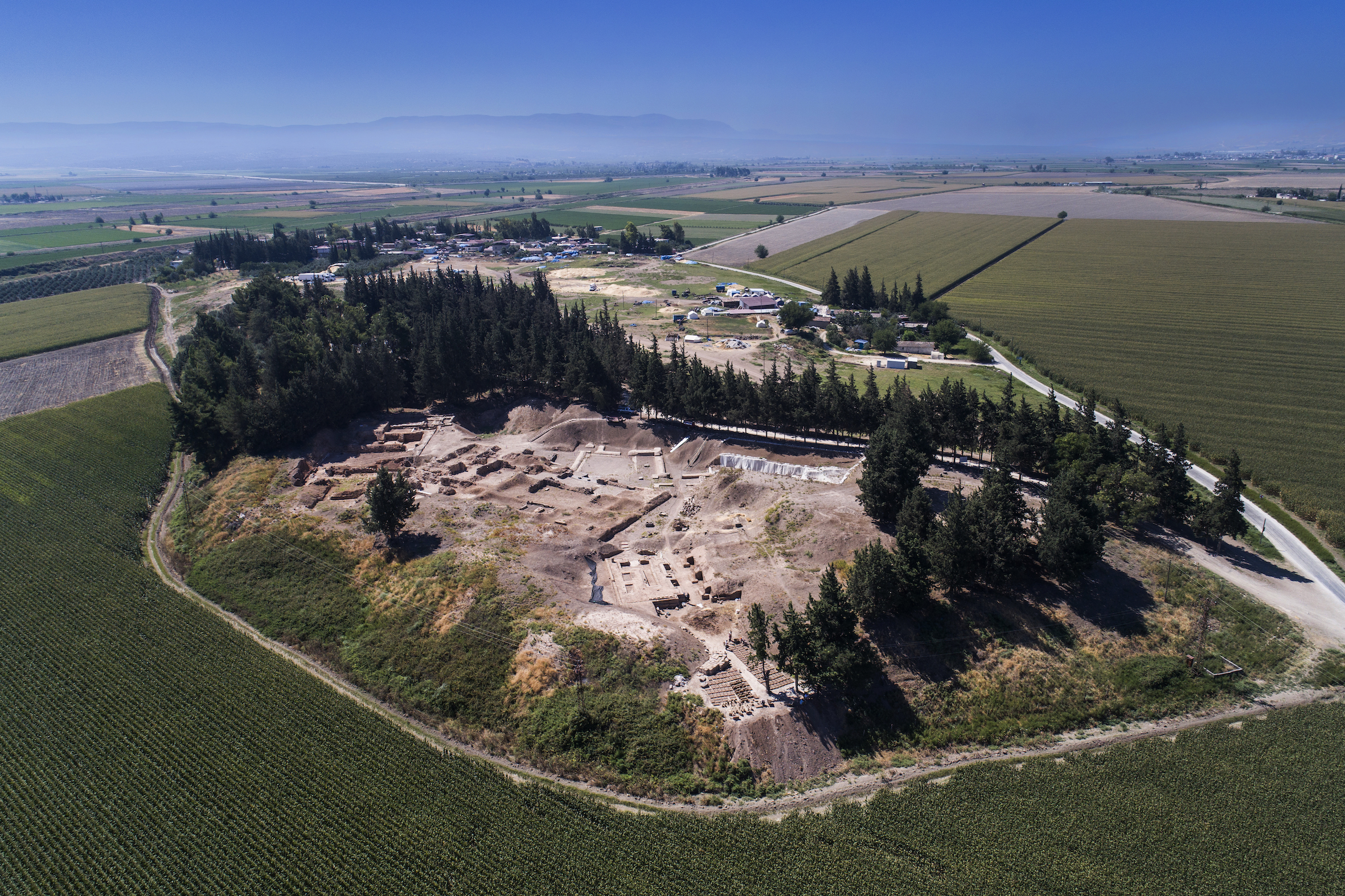
Over the last four years our team has produced nearly 4,000 mudbricks using a traditional recipe mixing straw, soil and water. As you can see (figure 2), this mixing is done by hand or rather by foot. The mixture is left to mature over night and the following day we make the bricks using custom-made metal frames that reproduce the shape and size of the bricks used in ancient Alalakh (figure 3).

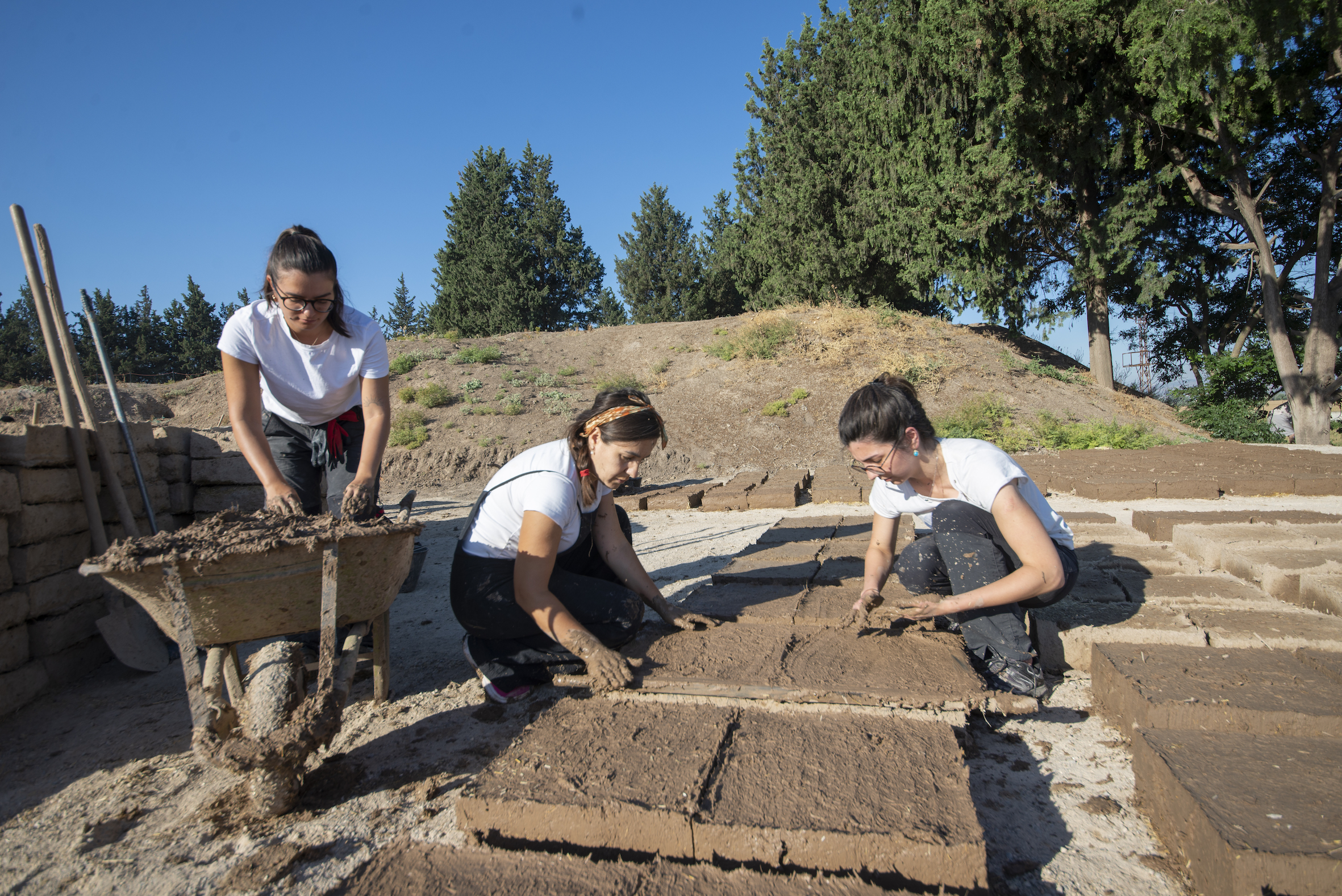
They are turned regularly to expose all sides to as much sunlight as possible for about a week. While the constant bending over and pushing the wheelbarrows and water buckets during mudbrick production was bad enough for the back, I had not been prepared for what followed.
Each of these bricks weigh 30 kg. We use them to reinforce existing walls or surround fragile walls with an additional layer. Layers are joined by mortar, which is sometimes enforced with gravel or additional straw. We then seal the walls by additional mud plastering (figure 4).
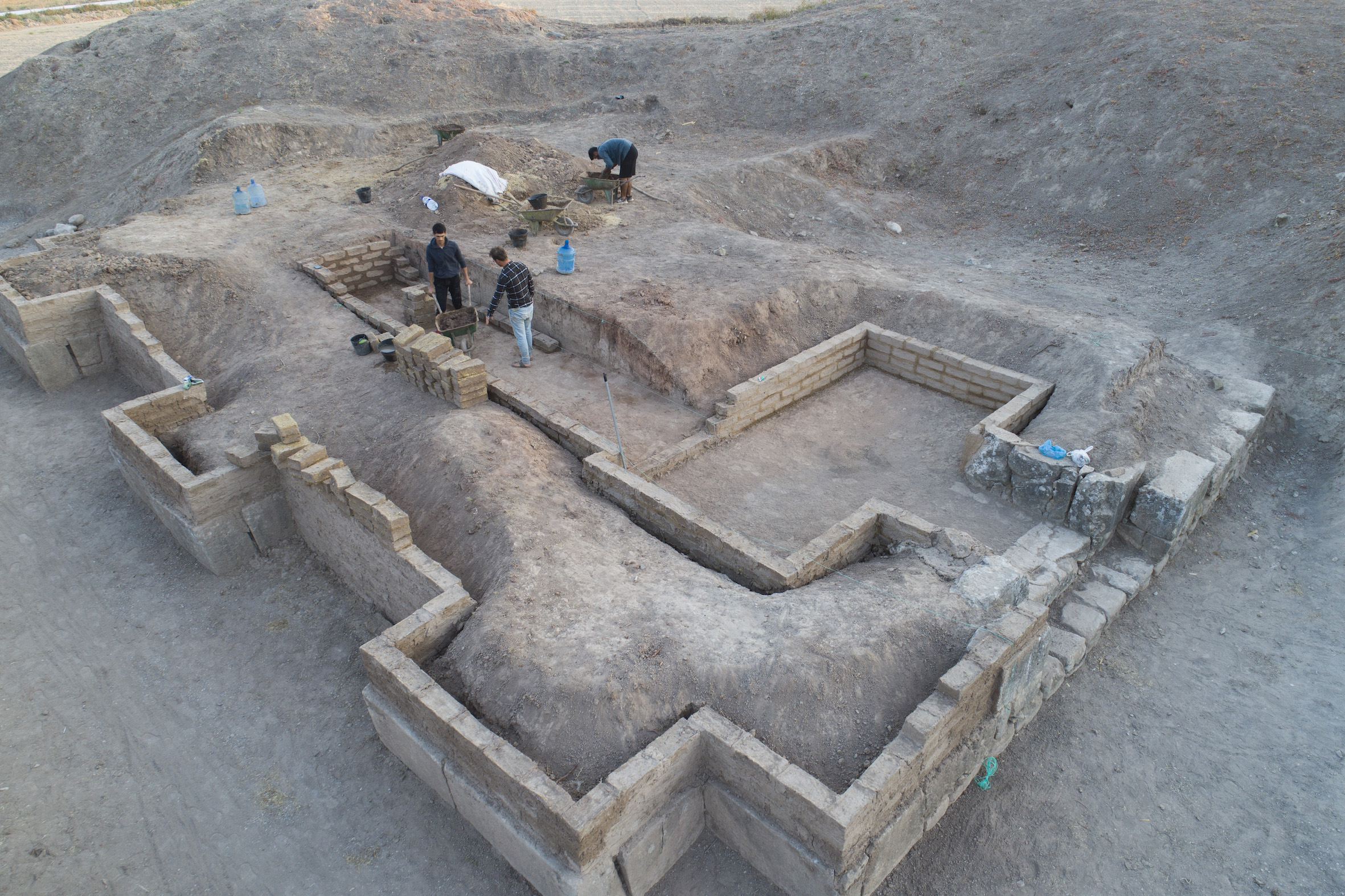
That meant: carry a brick (or in my case asking someone to help me carry it), placing it correctly, adding gravel or straw as temper (which of course also had to be brought in buckets or wheelbarrows), covering the row of bricks with mortar, repeat. From 5:30 in the morning until 1 pm crouching, sitting, getting up, carrying buckets, lifting bricks, pushing wheelbarrows, bending over, being upside down, getting into mud fights, wiping mud off your face, cursing the heat and the mud, and wishing it was lunch time so that you can go to your room and stretch out on your bed…and yet, enjoying every minute of this backbreaking work because you get to do it with your friends.
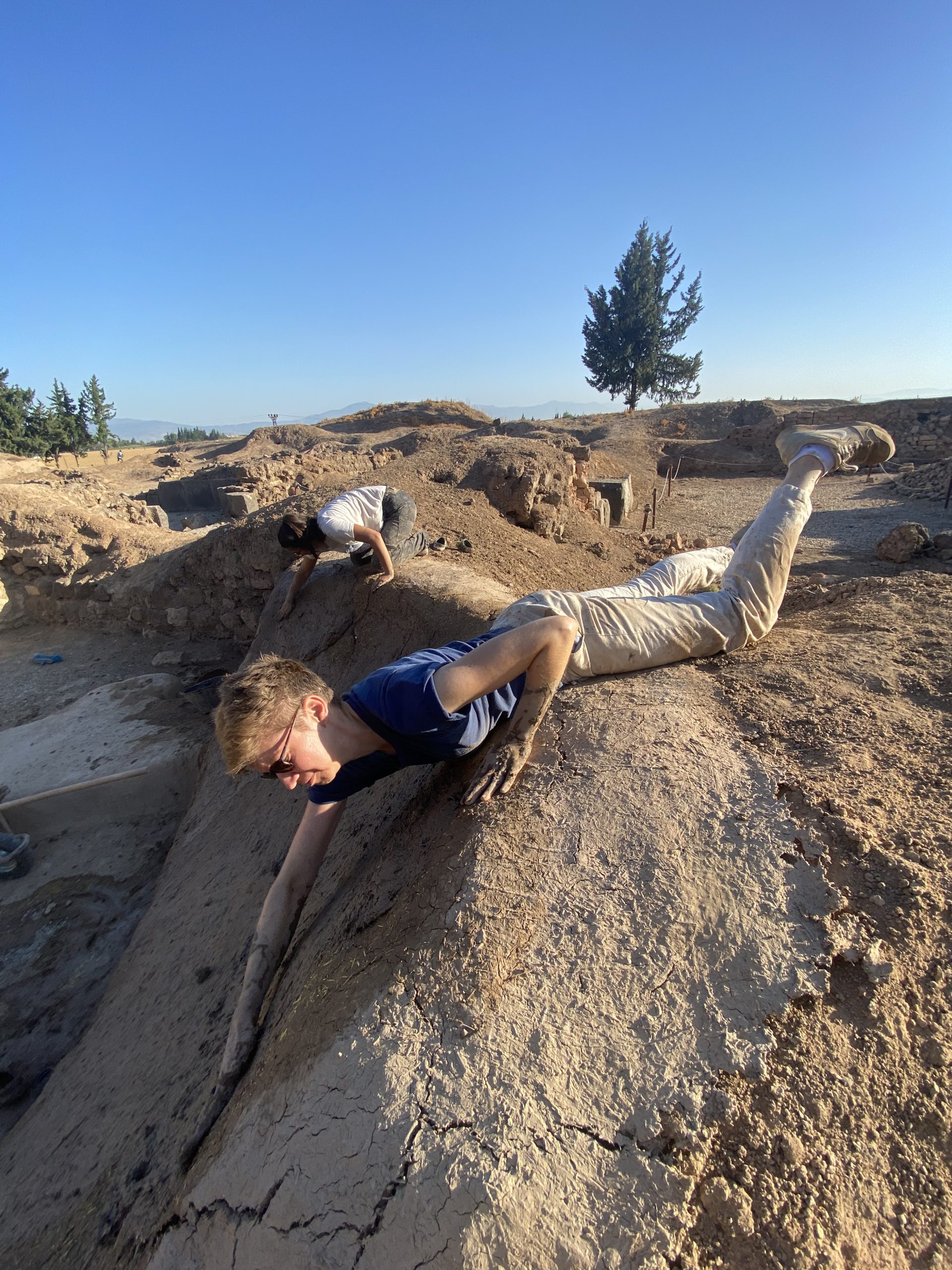
One of my favourite things about archaeology is being part of a community forged through hard work, friendship, collegiality and mutual support. There is almost no better feeling than being covered in mud from head to toe, exhausted, hot, thirsty and hungry and yet somehow finding the energy for a race to the car for the best seat for the ride home while laughing all the way. Being part of this kind of family – a chosen family some might say – is a real privilege and one I look forward to every year.
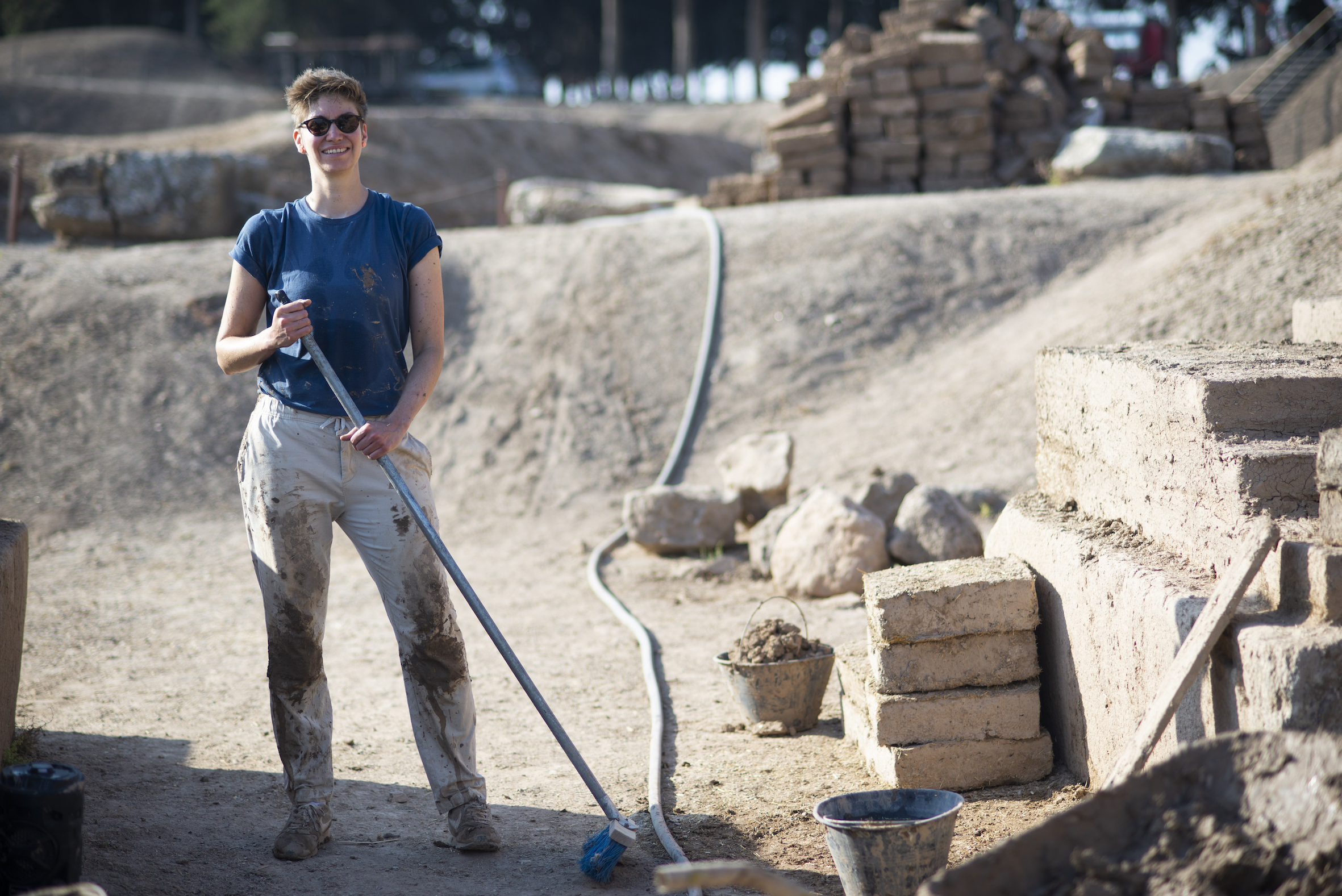
Hélène Maloigne is a lecturer in History at the School of Humanities & Social Sciences, University of Greenwich. They research the history of archaeology in the Middle East in the 19th/20th century and are Associate Editor for the Bulletin of the History of Archaeology and object registrar at Tell Atchana/Alalakh Excavations (Turkey).
All images © Tell Atchana, Alalakh Excavations Project. Murat Akar, 2023
www.alalakh.org
Instagram:@TellAtchana
https://helenemaloigne.wordpress.com/
Twitter: @HMaloigne
American Society of Overseas Research
The James F. Strange Center
209 Commerce Street
Alexandria, VA 22314
E-mail: info@asor.org
© 2023 ASOR
All rights reserved.
Images licensed under a Creative Commons Attribution-NonCommercial-ShareAlike 4.0 International License
COVID-19 Update: Please consider making payments or gifts on our secure Online Portal. Please e-mail info@asor.org if you have questions or need help.
